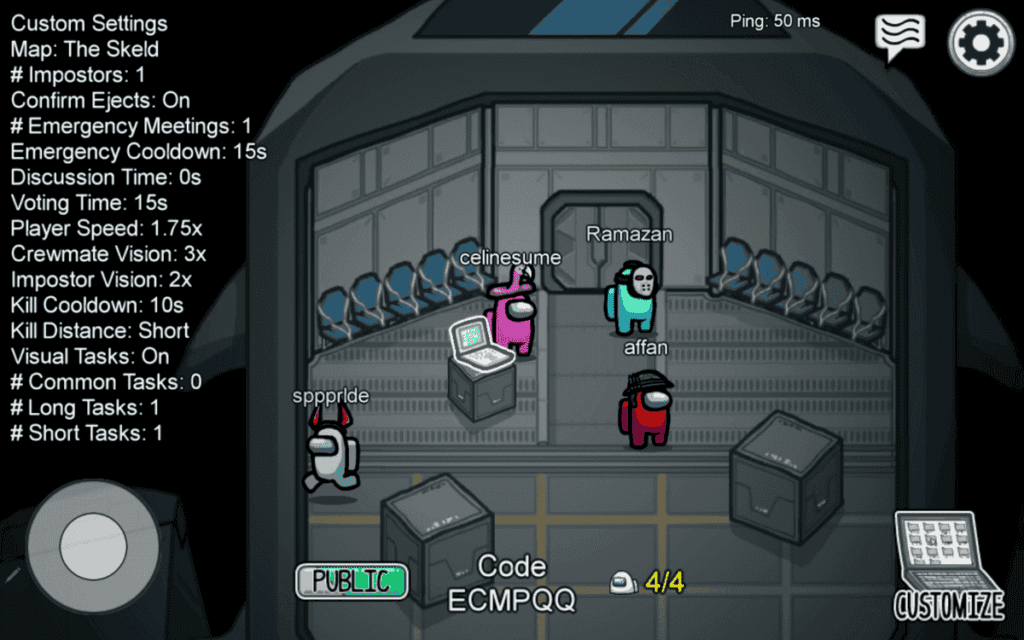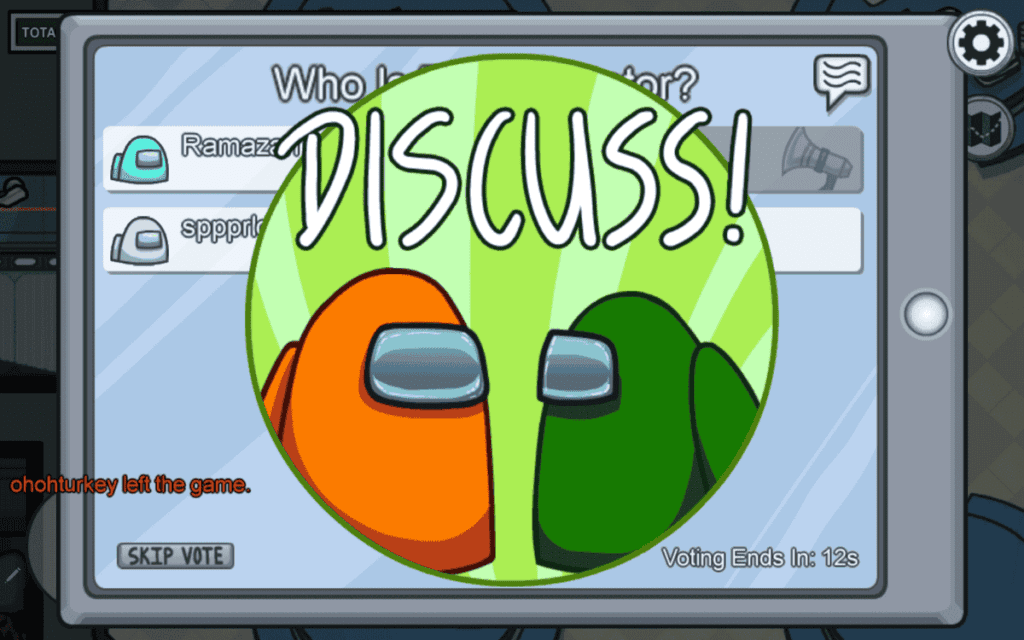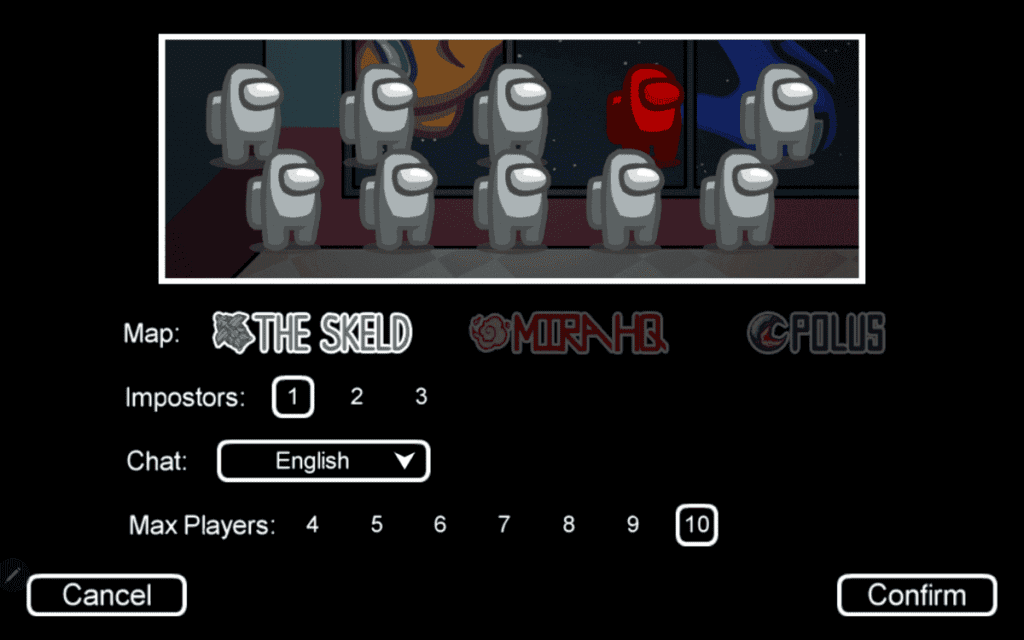Is Among Us safe for children?
What parents need to know
Among Us is popular among online games children and young people in the UK and around the world us. Learn what it is, how it works and what you should watch out for to keep kids safe in the game.
 Close video
Close video
What's on the page
What is Among Us?
Among Us is an online multiplayer game where users have to decide which player is the ‘Impostor’ while completing various tasks as ‘Crewmates’. Created in 2018 by American game studio Innersloth, it increased in popularity around Autumn 2020, possibly following the onset of the Covid-19 pandemic.
The game is accessible on a range of platforms, including Android, iOS and Windows devices along with Nintendo Switch, PlayStation and Xbox. It’s also free to play, which means anyone can join.
Why is it so popular with young people?
Among Us is very easy to play, which means learning how to play is quick. Additionally, the game involves a lot of teamwork and interaction with others — including both strangers and friends. The elements of science fiction and murder mystery also might appeal to a lot of users.
Users also have the option to customise the colour and accessories of their avatars and the game itself.
While the game matches up strangers from all over, users can also create a private server accesible only to friends who have the code.
How does it work?
The game can take place in one of five settings – a spaceship (The Skeld), an imaginary planet (Polus), the headquarters (Mira HQ), an island (The Fungle) and The Airship, which is the biggest map.

Joining the game
When users join the game, they are either assigned the role of Crewmate or Impostor. Only the Imposter knows who they are. There are sometimes more than one Impostor.
All players must complete certain task, and the Impostor must pretend to do the same. Secretly, though, they work to kill Crewmates. When another Crewmate comes across a dead body, they report it, which triggers a discussion about who the Impostor might be. Players can also trigger emergency meetings a limited number of times.
Voting out the Impostor
Users might have witnessed the Impostor killing a Crewmate (or something else suspicious) and can say so, but they must convince others. Equally, the Impostor can say the same about the witness. It’s up to the other players to make a decision, possibly based on other evidence users share.

After the discussion, all users must vote for who they think the Impostor is. If users choose the wrong person, the game continues. If users choose the Impostor, then that player gets ejected and the game ends.
Gameplay
Some players have to lie to keep their Impostor identity secret. The aspect of teamwork comes in where each player can use the in-game chat function to communicate their reasons for choosing a particular player or defending why they are not the Impostor.
For the Impostors to win the game, they have to sabotage tasks until the countdown runs out or take out a number of the Crewmates so there is an equal number of Impostors to Crewmates. Those who are taken out of the game are before the end can still help their teammates as ‘ghosts’.
What is the age rating for Among Us?
Among Us was originally rated PEGI 16 when it was released in June 2018. However, following an increase in interest in the game, it was reclassified as PEGI 7+ following another review of the game by the VSC Rating board. In the Apple App Store, it has also been listed as suitable for ages 9+.
Based on the PEGI rating, the game may “contain some possibly frightening scenes or sounds. Games can show violence as long as it’s unrealistic and directed towards fantasy characters. There may be some non-realistic violence towards people or violent actions (e.g: bombing of cities or non-human targets).”
Among Us does contain some cartoon violence as the Impostor character is instructed to kill the Crewmates on the ship. However, it’s not graphic or pointed towards real people.
What features does it have?
Hosting feature
Users can use the hosting feature to set up and customise a game. Hosts can customise the game’s theme, the number of Impostors and who can be blocked or removed from the game.
This option also generates a code that they can share with other players to give them access to the game. This is useful if you want the game to be private rather than public (accessible by everyone).

Private and public settings in the game
If a game is private, users must have a specific code to join. If a game is public, any user on the platform can find and join the game under the “Public” section.
To limit potential interaction with strangers, setting games to private and requiring users to have a code to play is a safer option. This means that if a child wants to play with their friends, they will have to send the code to friends through other platforms.
In-app purchases
Among Us has three forms of currency in-game: Beans, Stars and Pods. Users can buy cosmetic items for their avatar with these types of currency.
- Users can earn Beans through regular gameplay.
- Stars are premium currency which users must purchase with real money.
- Users can earn Pods in-game as long as a Cosmicube is already purchased.
Stars come in bundles and range in price from $1.99 USD for 20 stars to $24.99 USD for 300 Stars.
Users can purchase many single items for Beans, while bundles often cost Stars and range from 20 to 110 Stars.
Free-text chat
The free-text chat service has filters that remove bad language and personal information. It is used to communicate who the Impostor might be. This is only available within an active game.
The random text chat means strangers can’t contact your child unless actively playing. It isn’t usually a way to meet new people online, so remains relatively safe.
Use of other chat functions
Some players might also use Discord servers to talk to each other in the game. However, if you are playing on a mobile and joining a public game you will not know that the other players are chatting on Discord until the game has started.
This can present an unfair advantage as some players will not be included in the team discussions being had on the Discord server.
What is Among Us 3D?
Among Us 3D is the same type of game as the standard Among Us. However, it’s designed for play on VR headsets and PCs for increased immersion.
The characters, cartoon violence and purpose are all the same with Among Us 3D though now through first-person perspective. It currently retains the PEGI 7 rating as well.
New additions include:
- Proximity voice chat: Users can talk to crewmates in real time rather than through chat. This could leave younger players open to greater risk of inappropriate language.
- Tag mode: A new mode of gameplay with a new role: The Infected. Crewmates must avoid the Infected player.
- New tasks: Along with the tasks players need to complete in Among Us, users can expect new tasks in Among Us 3D.
- More customisation options
- Limited-time events throughout 2025.
With any new game, it’s important to proceed with caution. Play it yourself and with your child to see if it’s appropriate for them.
What are the risks for children?
Among Us can be relatively safe for children aged 7 and older to play. It promotes teamwork and communication, and can help children develop skills related to critical thinking and problem-solving.
However, as with any multiplayer game with communication, there are some risks to consider.
Talking to strangers in the game
The free-text chat means that unexpected things can happen, even with the language filters that Among Us uses.
If your child plays a public game, they are likely to chat with strangers. However, all conversation happens during the game, and there’s usually very little time for the conversation to go beyond figuring out who the Impostor is.
Still, we recommend restricting users under 13 to private games rather than public.
You should also ensure that your child creates or joins with an account that reflects their accurate age. Children under the age of 13 can only use Quick Chat, which lets them select from a list of phrases. This can limit them from sharing private information.
Cyberbullying, trolling and hate
Some players on Among Us might target users unfairly in both public and private games. This might include calling a user names that bypass the chat filters. It can also include ‘throwing’ the game by being disruptive or rude.
While there is a blocking feature, it’s not always effective. So, if your child encounters this behaviour, encourage them to leave and join a different game. For private games, which generally include friends, encourage your child to come to you for support.
How to use Among Us safety settings
Set up your child’s Among Us account
To help parents create safer Among Us experience for their child, Innersloth requires parent permission for children under 13.
When your child tries to create an Among Us account, they should enter their real age. If their age is under 13, they will need a parent’s email to finish sign up.
- Enter your email. Once submitted, check your email account.
- In the email, click Review permissions.
- Tick which permissions you’d like to give your child. These include access to Free-Text Chat, creating a Custom Display Name, Account Linking to use their account on other devices, and adding users to a Friends List.
- You then need to confirm your age to prove you’re an adult. You can do this with a face scan, by entering a credit or debit card or by scanning an ID.
Your child can then use Among Us with the restrictions you set.
If your child is supervised with Google Family Link or similar parental controls, you might struggle to trigger the parent set up. You will have to remove supervision of your child, set up Among Us and then re-add the supervision settings.
Customise chat and friend settings
If you did not set up an account for your child, you can still help them customise their safety. Under Settings > General, ensure that Censor Chat is On.
You can also turn off Friend & Lobby Invites. However, they won’t be able to play with their friends if you do this.
Tips to keep children and young people safe in the game
- Encourage your child to set get games to private and only play with people that they know.
- If they are the Host of the game, advise them remain vigilant of what players say or do. Tell them to remove anyone that doesn’t respect others or shares inappropriate content.
- If they use free-text chat, make sure they keep their personal information private, particularly if they are playing with people they don’t know.
- For young children using Discord to speak to players in the game, it’s a good idea to have a rule against headsets. This makes it easier for you to track what they’re talking about.
- Talk to them about issues such as cyberbullying and online grooming so they know how to recognise these risks. Discuss coping strategies to use if they come across them in and out of the game.